Special Report: Proper additive balance needed to meet GF-5
Dr. Neil Canter, Contributing Editor | TLT Tech Beat September 2010
Managing the tradeoffs in fuel efficiency and engine cleanliness are among the biggest challenges and have generated new test procedures.
 www.canstockphoto.com
www.canstockphoto.com
KEY CONCEPTS
•
ILSAC GF-5 has been approved, and products meeting this specification will be available for purchase in October 2010.
•
Among the most important upgrades for GF-5 are improvements in emission system durability, fuel economy and engine oil robustness.
•
One challenge in good additive balancing is handling the tradeoff between meeting the GF-5 fuel economy and deposit-control requirements.
GF-5, the latest International Lubricant Standardization and Approval Committee (ILSAC) passenger car motor oil specification, was approved in December 2009. Products meeting this specification will be licensed on Oct. 1, 2010, and then be available for purchase by the consumer.
A number of factors such as fuel economy, control of emissions, more flex-fuel vehicles using gasoline-ethanol blends up to E-85 and improved engine oil robustness have made it more difficult for the engine oil additive and additive package suppliers to develop products to meet these challenges present in GF-5.
While faced with these issues, additive companies also need to continue to balance their formulations with the appropriate detergents, dispersants and antioxidants to ensure continuing excellent lubricant performance. TLT interviewed representatives from five leading automotive lubricant additive companies:
•
Afton Chemical
•
Chevron Oronite Co. LLC
•
Infineum USA LP
•
The Lubrizol Corp.
•
R.T. Vanderbilt Co.
to obtain a good assessment of how the industry dealt with these issues in preparing products to meet GF-5.
One other issue the lubricant industry is dealing with is the high cost of testing to verify that automotive lubricants meet GF-5 and other specifications. A list of the tests run to meet GF-5 is provided in Table 1. Also included are the testing requirements for the corresponding American Petroleum Institute (API) category SN, which covers all engine oil viscosity grades, including those not included in GF-5.
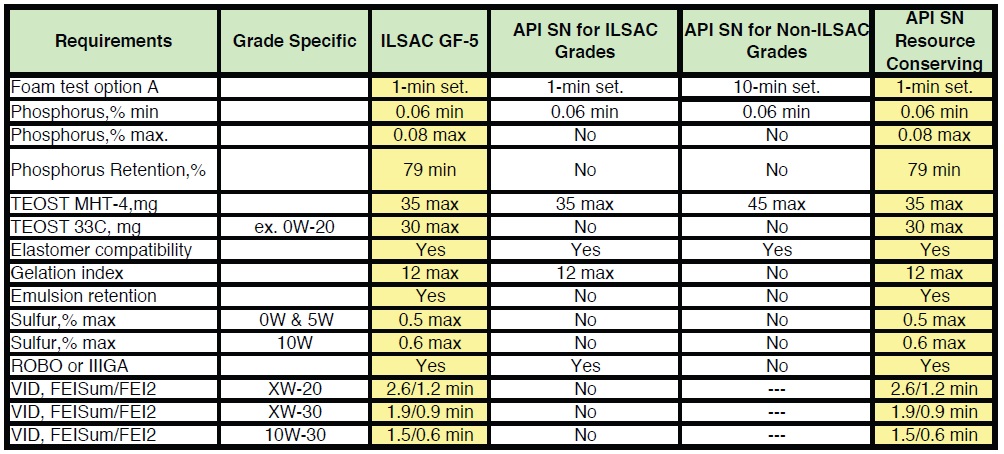 Table 1. An extensive series of tests must be passed for an oil to meet the ILSAC GF-5 specification. Testing requirements for API SN are also listed. (Courtesy of Infineum USA LP)
Table 1. An extensive series of tests must be passed for an oil to meet the ILSAC GF-5 specification. Testing requirements for API SN are also listed. (Courtesy of Infineum USA LP)
One test is the Sequence IIIGA, which conditions oil so it can be evaluated for low-temperature viscosity measurement. This measurement determines how extensively oil thickens at low temperature. The current Sequence IIIGA test is conducted using a 3.8-liter V-6 GM engine and costs about $40,000. Representatives from Evonik RohMax USA were interviewed to learn more about their development of an alternative bench test known as the ROBO (Romaszewski Oil Bench Oxidation).
IMPORTANT GF-5 UPGRADES
The major engine oil parameters are highlighted in the spider diagram in Figure 1, which compares GF-5 performance vs. GF-4. James Puckace, global marketing manager-engine oils for The Lubrizol Corp., in Wickliffe, Ohio, says, "Three key requirements have been defined by the new specification for ILSAC GF-5, representing a true upgrade over current ILSAC GF-4 oils. All three have equal importance: improved emission system durability, improved fuel economy and improved engine oil robustness under severe operating conditions."
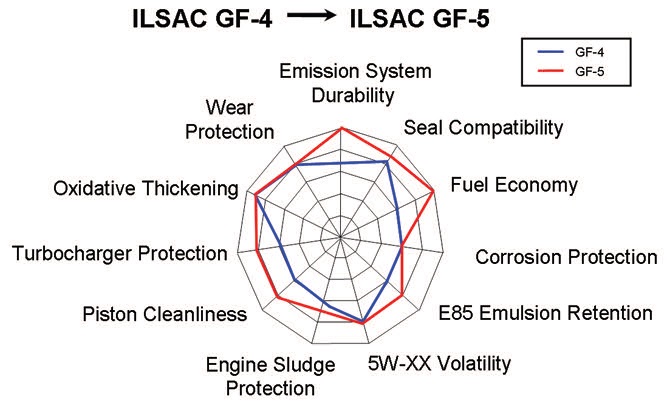 Figure 1. This spider diagram shows the improvements made in the major engine oil parameters in ILSAC GF-5 as compared to ILSAC GF-4. (Courtesy of The Lubrizol Corp.)
Figure 1. This spider diagram shows the improvements made in the major engine oil parameters in ILSAC GF-5 as compared to ILSAC GF-4. (Courtesy of The Lubrizol Corp.)
Puckace defines improved engine oil robustness as including better sludge protection and piston cleanliness, turbocharger protection, improved seal compatibility and compatibility when using ethanol fuels up to E-85.
Gary M. Parsons, global OEM and industry liaison manager for Chevron Oronite in Richmond, Calif., also indicates the same three areas of improvement in GF-5 compared Markus to GF-4. He notes that an improvement in one of these categories can lead to deterioration in performance in a second one, which makes understanding the tradeoffs involved and balancing the GF-5 formulations accordingly an essential element for success.
He says, "From an engine oil formulating standpoint, GF-5 objectives can conflict with each other in certain areas. In this respect, we would not say there is any single development that was more important than the others. We want to point out that some of the formulation balance considerations are a deposit-control-formulation solution for improved Sequence IIIG (weighted piston deposits); Sequence VG (average engine sludge); TEOST 33C (high temperature deposit formation) that does not significantly impact fuel economy; and a higher stability zinc dialkyldithiophosphate (ZDDP) for phosphorus retention that does not negatively impact Sequence IVA (average cam load wear) and Sequence IIIG wear."
Dewey Szemenyei, director of engine oil customer technical service for Afton Chemical in Richmond, Va., finds that there is no single additive development in GF-5. "The specification has improvements in four or five key performance aspects such as fuel economy and cleanliness, requiring new chemistry with a holistic balance along all of these performance areas," he says. "Therefore, the key development was creating a holistic formula with components that enabled durability that had a minimal negative impact on fuel economy."
The change to less volatile ZDDPs to reduce concerns with emissions is the key additive development, according to Andy Ritchie, industry liaison advisor for Infineum in Linden, N.J. Ritchie points out that the level of phosphorus allowed in an ILSAC GF-5 engine oil has remained at the ILSAC GF-4 level of 0.08% maximum. However, Ritchie continues, "The ILSAC GF-5 requirement for improved control of phosphorus volatility demanded the development and incorporation of ZDDPs that do not volatilize to the degree that previous ZDDP chemistries did. The deployment of these new chemistries in the ILSAC GF-5 formulations on a global basis represented the single most important new challenge in formulating to meet this specification."
STLE-member Glenn Mazzamaro, manager global sales & OEM liaison for R.T. Vanderbilt in Norwalk, Conn., agrees that low-volatility ZDDP is the most important additive development but adds that GF-5 did not meet the automotive industry's need for improved fuel economy. Mazzamaro says, "The most important additive development for GF-5 is the development of low-volatility ZDDP to meet the catalyst compatibility needs of ILSAC. However, catalyst compatibility was not on the top of ILSAC's list of GF-5 needs. Fuel economy was on the top of that list, but the final GF-5 specification falls short of many OEMs' desires for improved fuel economy. As a result, no significant additive upgrades occurred with GF-5 related to friction modifiers for improved fuel economy."
FUEL ECONOMY
In May 2009 the U.S. federal government mandated that the Corporate Average Fuel Economy (CAFE) of automobiles be raised from the current 27.5 miles per gallon to 35.5 miles per gallon by 2016. In addition, the Obama administration is developing higher fuel economy standards for model year 2017 and beyond.
With this change in the fuel economy standards, more attention is being paid to how GF-5 automotive lubricants will improve fuel economy. Parsons indicates that since GF-1, use of specific additives and formulation development has led to greater than a 2% fuel economy improvement through GF-5. The impact of lubricants on improved fuel economy is shown in Figure 2. As noted in this figure, GF-5 oils increase fuel economy over their GF-4 counterparts by approximately 0.5%.
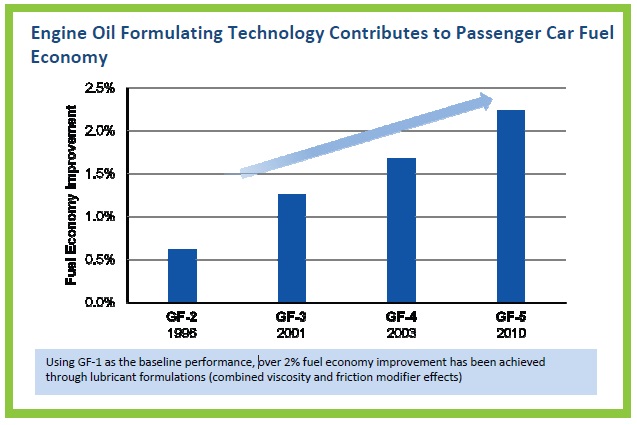 Figure 2. Over the past 14 years, the improvement in fuel economy attributed to the engine oil is greater than 2%. A fuel economy improvement of approximately 0.5% has been realized in moving from ILSAC GF-4 to ILSAC GF-5. (Courtesy of Chevron Oronite Co. LLC)
Figure 2. Over the past 14 years, the improvement in fuel economy attributed to the engine oil is greater than 2%. A fuel economy improvement of approximately 0.5% has been realized in moving from ILSAC GF-4 to ILSAC GF-5. (Courtesy of Chevron Oronite Co. LLC)
Parsons says, "The fuel economy improvements are a result of advances in various components and formulating technology, including the use of friction modifiers. There has been a general trend toward reduced viscosity grade oils, and that involves more than just blending with lighter base oils, while the move to lower-viscosity base stocks was made to improve fuel economy and reduce pumping losses. This has also resulted in reduced oil film thickness. A combination of conventional and supplemental anti wear additives is used to meet the wear performance requirements of low viscosity oils."
THE TRADEOFF
The juggling act additive package suppliers perform is particularly challenging in maximizing fuel economy improvements and deposit control. With the available additive chemistries, it appears that maximizing one of these factors can lead to problems in maximizing the other parameter.
Mazzamaro believes that the increase in GF-5 fuel economy requirements as compared to GF-4 can be accomplished with current GF-4 friction modifier additives. Use of other friction modifiers that might provide even better performance is discouraged because it can lead to inferior high-temperature deposit control.
He says, "Unfortunately, very little has changed in friction modifier technology between GF-4 and GF-5 as the Sequence VID fuel economy improvement (FEI) limits were set at a level which barely requires a statistically significant improvement over GF-4 oils, and this minor improvement could be achieved via formulation modifications other than from the friction modifier type."
Mazzamaro maintains that meeting the TEOST 33C deposit-control test makes it very difficult to prepare automotive lubricants that exhibit high levels of fuel economy. He explains, "Inclusion of the TEOST 33C test in GF-5 to protect against turbocharger deposits resulted in limiting the formulator's flexibility in formulating high fuel economy engine oils using molybdenum friction modifiers."
Figure 3 data supports Mazzamaro's contention. An industry consortium conducted testing on five engine oils containing two different additive package technologies that differ in composition by friction modifier level and type. As noted, Oil I prepared with a molybdenum additive exhibits the highest level of fuel economy improvement, according to the Sequence VID test but does not pass the TEOST 33C test.
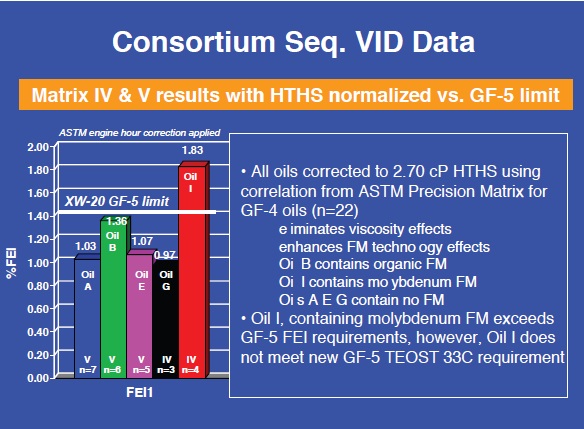 Figure 3. Fuel economy improvement results obtained from Sequence VID fuel economy testing by an industry consortium show that the choice of friction modifier can affect fuel economy results and also affect results from the TEOST 33C (high temperature deposit formation) test. (Courtesy of R.T. Vanderbilt Co., Inc.)
Figure 3. Fuel economy improvement results obtained from Sequence VID fuel economy testing by an industry consortium show that the choice of friction modifier can affect fuel economy results and also affect results from the TEOST 33C (high temperature deposit formation) test. (Courtesy of R.T. Vanderbilt Co., Inc.)
Szemenyei agrees there is a tradeoff between fuel economy and engine deposits. He says, "Figure 4 shows the reverse correlation between fuel economy and the Sequence IIIG piston deposits." As noted in the chart, engine oils exhibiting high levels of fuel economy do not perform as well in the engine deposit test.
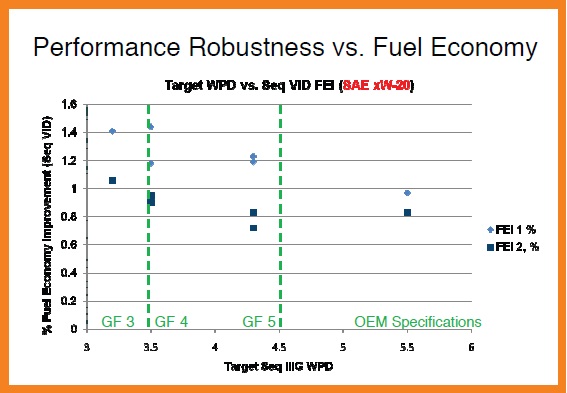 Figure 4. The tradeoff in performance between the Sequence VID fuel economy and Sequence IIIG (weighted piston deposits–WPD) tests is shown. Engine oils that perform well in the Sequence VID test do not perform as well in the Sequence IIIG test. (Courtesy of Afton Chemical Corp.)
Figure 4. The tradeoff in performance between the Sequence VID fuel economy and Sequence IIIG (weighted piston deposits–WPD) tests is shown. Engine oils that perform well in the Sequence VID test do not perform as well in the Sequence IIIG test. (Courtesy of Afton Chemical Corp.)
Szemenyei indicates that current and future improvements in CAFE are more a matter of enabling and protecting engine technologies that automotive OEMs have and will employ rather than upgrades in the friction modifiers used in engine oils. He notes that the lubricant industry is seeing increased use of turbochargers to get more power out of smaller engines. Other hardware changes include direct injection, variable valve timing and cylinder deactivation.
Szemenyei says, "Viscosity has a greater impact on fuel economy than any other motor oil property. During the Sequence VI development, dynamometer testing showed only a small impact from viscosity on fuel economy and very little benefit from friction modifiers. Frankly, this is because automakers have done a great job of reducing engine friction. Therefore, protection of energy-saving hardware is the best way for an engine oil to maximize fuel economy."
Ritchie also states that there are tradeoffs between using friction modifiers to boost fuel economy and achieving improved deposit control. He says, "While research continues into new chemical sources to improve fuel economy, we have probably captured most of the improvements possible from established additive technologies. The focus now seems to be on the use of lower viscosity oils that can capture some additional credits, provided, of course, that vehicle performance and durability are not compromised through the use of lower viscosity oils."
Ritchie contends that lower-viscosity oils are usable as long as additive companies work cooperatively with OEMs in the design of new engine hardware. "Our studies show no detrimental effects when switching to SAE OW-20 oils when the hardware is designed to be capable of handling these lower viscosities," he says. "We believe there is room for further optimization of lubricant viscosity without having a negative impact on engine protection."
PHOSPHORUS RETENTION
As a critical additive in engine oil formulations, ZDDPs provide the dual functions of antiwear and antioxidation. But it is well known that ZDDP also can shorten the life of an automobile's catalytic converter. In a 2005 TLT article, research on this issue showed that ZDDPs form zinc polyphosphate films that can interfere with the three-way precious metal catalyst used in automotive emissions systems (
1).
To address this issue, GF-5 focuses on restricting the amount of ZDDP that comes in contact with the emission system. A phosphorus-retention test has been developed (Sequence IIIGB Bench Test) to ensure that a minimum percentage of the ZDDP used in the engine oil formulation stays in the engine and does not pass to the catalytic converter.
The additive-company representatives interviewed had differing views on how they formulated their engine oils to meet this specification. Szemenyei indicated that it was a matter of selecting the proper components in the additive package and working with the designated lab test to develop the right ZDDPs to meet the minimum phosphorus retention percentage.
Szemenyei says, "Phosphorus retention is not simply a function of ZDDP selection. Dispersants, detergents and other ingredients also play an important role. ZDDP volatility is a very temperature-sensitive phenomenon. Different test procedures and test temperatures yield different rankings, sometimes even reversing the rank order.
"During development of GF-5, we had to pick a test procedure," Szemenyei adds. "Because there was so little field correlation to work with, the industry selected the Sequence IIIGB. Once the procedure was set, it was simply a matter of selecting the ZDDPs and mixes of ZDDPs that puts you in the ballpark."
Gabe Rhoads, regional business manager-engine oils, for Lubrizol, touts the development of a newly patented technology that exhibits superior phosphorus retention. He says, "We have developed a technology that provides the preferred solution of both emission system durability and engine wear protection. This technology keeps the antiwear chemistry in the engine, where it should be, and away from the catalytic converter."
In contrast, Parsons maintains that his company did not need to make changes in the ZDDP to meet the new specification. He says, "Our engine oil formulations have had high levels of phosphorus retention all along. Therefore, the ZDDP system used did not need to be changed to meet the new phosphorus retention requirements of the Sequence IIIGB test."
One of the key precursors used in the manufacture of ZDDPs is alcohols. Mazzamaro says, "Changes to the alcohol types used to make ZDDP can be made to reduce the volatility of the phosphorus components."
DEALING WITH ETHANOL
The inclusion of ethanol in gasoline up to a concentration of 15% (E-85) presents additional challenges for additive suppliers, including the proper mix of components to address such issues as corrosion and emulsion retention.
Ethanol is hygroscopic so that it will readily absorb water from the atmosphere. This issue can lead to concerns about corrosion and also a challenge for the engine oil formulator to ensure that free water does not separate out from the lubricant. GF-5 includes an E-85 emulsion retention test (ASTM D7563) that evaluates if water separates from an engine oil treated with 10% ethanol and 10% water over a 24-hour period at 0 C and 25 C.
Parsons says, "The added alcohol in gasoline attracts water, which can lead to elevated moisture levels. Therefore, Formulating for use of E-85 involves prevention of rust and corrosion as well as emulsion retention to avoid free water separating from oil. Rust and corrosion inhibitors are used to prevent any water from leading to rusting of exposed metal surfaces in the engine. As the water levels in the crankcase oil rise, there is the potential for separation to occur and free water bottoms to form in the crankcase oil. Free water bottoms can lead to catastrophic failure of the engine."
Puckace points out that freezing of free water in the oil pan causes engine failure by blocking off the oil pickup tube, which prevents lubricant from getting back to the engine. He also identifies another problem with water contamination: "Free water can generate a white mayonnaise (also referred to as white sludge) that can block the positive crankcase ventilation (PCV) system (
see Figure 5). The appropriate additive chemistry is required to ensure the water stays as an emulsion when lubricant, ethanol and water are present." The PCV system facilitates the continuous removal of gases from the crankcase.
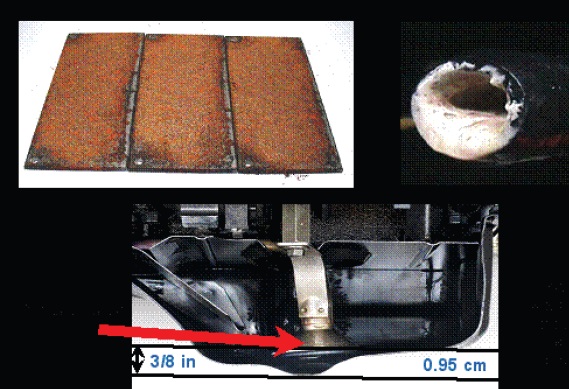 Figure 5. The use of ethanol in gasoline can increase the presence of water in the engine oil. Besides the potential for more corrosion, the free water can form a white mayonnaise (white sludge) that can block the Positive Crankcase Ventilation System. (Courtesy of The Lubrizol Corp.)
Figure 5. The use of ethanol in gasoline can increase the presence of water in the engine oil. Besides the potential for more corrosion, the free water can form a white mayonnaise (white sludge) that can block the Positive Crankcase Ventilation System. (Courtesy of The Lubrizol Corp.)
Szemenyei believes that selection of the other engine oil additives is also very important to ensure that the lubricant meets the emulsion-retention test. He says, "The emulsion retention test limits the ingredient combinations in a motor oil formulation. Emulsion technology is a science in itself. It is important to start with the correct dispersants. Unfortunately, the balance can be easily upset by adding friction modifiers, detergents and certain antioxidants. It is a matter of understanding what components work well with one another and how they interact with one another in the emulsion structure."
IMPROVING ENGINE CLEANLINESS
Deposit control requirements for the Sequence IIIG and Sequence VG tests were boosted in GF-5 as compared to GF-4 to ensure that engine oils exhibited better protection. The TEOST 33C test also has been added to ensure Good deposit control at high temperatures. Use of the right type and mix of additives in the engine oil formulation is needed to pass these three tests.
Ritchie says, "Improvements in sludge and piston deposit protection are achieved with the right balance of dispersant and detergent in the additive package. It is believed that the increased deposit protection afforded by ILSAC GF-5 oils should provide additional protection for turbochargers. In addition, the TEOST 33C test was added to protect turbochargers for all viscosity grades except SAE 0W-20. However, if turbocharged engines continue to gain popularity in the future, there may be need for a turbocharger performance test."
Szemenyei notes that focusing on dispersant and antioxidant technologies improves engine cleanliness. He says, "Newly developed dispersants are used that provide greater activity than a previous generation. This improved technology has the benefit of obtaining a given level of cleanliness with better fuel economy. Extensive Sequence IIIG matrix testing was done to identify the types of antioxidants that work well or not well with different formulation styles and basestock characteristics."
Parsons indicates that optimizing the level of detergents and dispersants is important so as not to impact fuel economy performance. He says, "The Sequence IIIG, Sequence VG and TEOST 33C tests all require higher levels of detergents and dispersants. This is another example where a complete formulation approach must be used to assure the formulation is optimized to meet often conflicting requirements."
VISCOSITY INDEX AND POUR POINT DEPRESSANT SELECTION
Szemenyei states that the introduction of the ROBO test to GF-5 has led to a change in the type of viscosity index (VI) improver used and also in a reduced concentration of pour point depressant (PPDs). He says, "A substantial portion of the market has abandoned high ethylene crystalline olefin copolymers (OCPs) in favor of amorphous OCPs. Crystalline OCPs, typically characterized by ethylene contents greater than about 50%, generally provide a lower cost route to thickening than amorphous. But their crystallinity often results in very sensitive low-temperature properties. Also, crystalline OCPs are more sensitive to low-temperature property degradation in service and to changes in basestock and additive components.
Szemenyei adds, "Because formulators are moving away from crystalline OCPs, which generally require higher doses of PPDs to control low temperature properties, GF-5 engine oils are expected to be formulated with lower pour point depressant dosages than GF-4."
Ritchie believes that longer engine oil drain intervals and potential contamination from alternative fuels such as E-85 have an impact on pumpability of the oil as it ages. He says, "Under these conditions, it becomes even more critical to match basestocks with the right VI improver and PPDs. The growing use of Group III basestocks also requires careful VI improver and PPD selection."
Parsons says, "A complete formulating approach must be used. The shear stability of the VI improver can have a major Impact on fuel economy. VI improver type and base oil source has an impact on selection of PPDs."
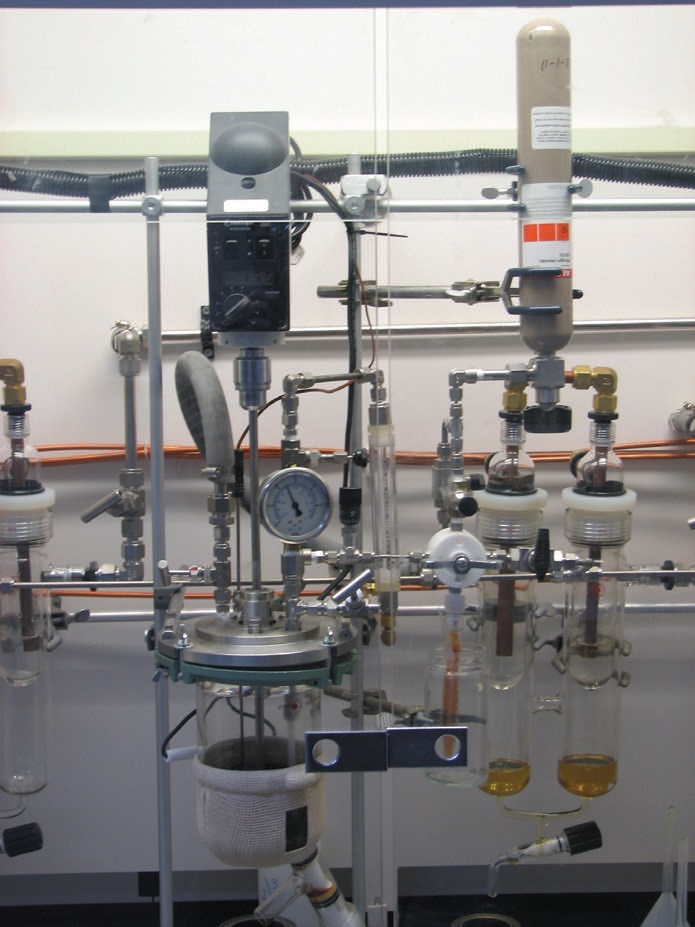 Figure 6. The ROBO test is run with the laboratory equipment shown. (Courtesy of Evonik RohMax USA, Inc.)
Figure 6. The ROBO test is run with the laboratory equipment shown. (Courtesy of Evonik RohMax USA, Inc.)
ROBO TEST
Extensive testing is being done to ensure that auto engine oils meet GF-5 specifications. Many of these tests involve specific automotive engines and can be very expensive and time-consuming. For example, the Sequence IIIGA test has been utilized to condition engine oil for low temperature viscosity measurements. This test is conducted for 100 hours with the oil at a temperature of 150 C.
An alternative test method has now been developed that emulates the Sequence IIIGA but uses laboratory equipment. STLE-member Joan Souchik, North American regional technical service center manager for Evonik RohMax USA, Inc., in Horsham, Pa., says, "Originally we intended to develop new pour point depressant test methodologies to assist in our product development efforts. But we found that we had an opportunity to devise a more cost-effective, less time-consuming bench test procedure that can be used as a replacement for the Sequence IIIGA procedure. Our intention is not to replace the wear and deposit components of the Sequence IIIG test but, rather, to focus on oxidization and volatilization processes occurring with preparation of used engine oil."
Over several years, a thorough series of experiments was conducted to develop a procedure now known as the ROBO test that has been standardized as ASTM D7528. The test apparatus used for the procedure is shown in Figure 6 and appears to be little different from equipment normally used to run other laboratory experiments.
The ROBO test is conducted at a temperature of 170 C for a period of 40 hours. Approximately 200 grams of engine oil is used for each run in the presence of dried air, a nitrogen dioxide, an iron ferrocene catalyst and vacuum. The nitrogen dioxide simulates the presence of blow-by gas in the engine, and the iron catalyst takes wear debris into consideration. Vacuum is applied to account for the evaporative loss of light-end, lower-viscosity base oil from the engine during operation.
Following the ROBO procedure, ASTM D4684, mini rotary viscometer (MRV) is run just as it is after the Sequence IIIGA to determine low-temperature pumpability of the conditioned engine oil.
Three Sequence IIIGA matrix reference engine oils and 34 other oils were evaluated using the ROBO procedure followed by the MRV test and compared to the Sequence IIIGA method (2). Linear regression analysis yields an r-square value of 0.802 for predicting how well the ROBO test correlates with the Sequence IIIGA method. Elimination of two data points, with Sequence IIIGA results strongly thought to be overly severe outliers, enables the r-square value to rise to 0.922.
Additional statistical analysis of the same data set was conducted to determine how accurately the ROBO test was able to predict whether the outcome from the Sequence IIIGA test is a pass or fail. It was found that the ROBO procedure accurately predicts the outcome from the Sequence IIIGA test 81% of the time.
Further testing was done in an ASTM-sponsored round-robin among seven testing labs. The results show that the ROBO test generates similar results as compared to the Sequence IIIGA procedure.
The ROBO test has been approved for use in GF-5 and only costs about $1,500. Souchik says, "We have achieved our objective of developing a bench test to age engine oil that is also cost-effective."
OEM SPECIFICATIONS
A recent development that may impact the types and amount of testing done is the implementation of engine oil specifications by some OEMs. One example is the new dexos™ 1 specification developed by GM for gasoline engines. Table 2 shows the additional testing required for this OEM specification as compared to GF-5.
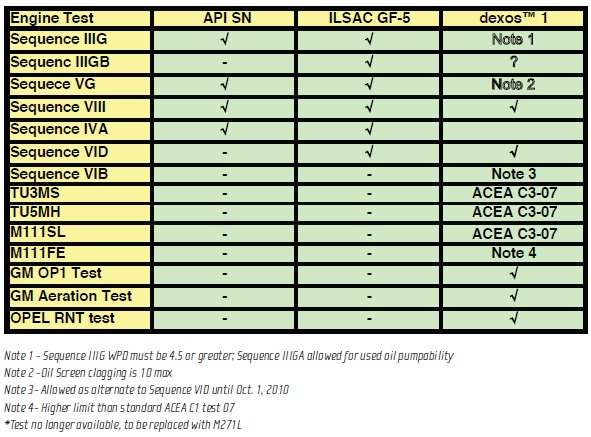 Table 2. The additional testing requirements for GM’s Dexo-1™ specification are shown as compared to ILSAC GF-5 and API SN. (Courtesy of Infineum USA LP)
Table 2. The additional testing requirements for GM’s Dexo-1™ specification are shown as compared to ILSAC GF-5 and API SN. (Courtesy of Infineum USA LP)
Rhoads indicates that dexos 1 will require the lubricant market to make some adjustments by moving beyond formulating of components to meet just GF-5. He says, "The launch of GM's dexos 1 engine oil specifications brings a new high-performance tier to the global engine oil market. In the case of dexos 1, several tests, in addition to the traditional ILSAC GF-4/GF-5 list, are required-including many European and GM-specific tests.
"These new requirements cannot be met with optimized GF-5 chemistry alone," Rhoads adds. "More demanding tests and less flexible base oil interchange means a higher investment to bring an approved formulation to market. Most of our customers are interested in dexos 1 and will offer it alongside a GF-5 product line. We have chosen to link our dexos 1 solution to our SN/GF-5 package through a booster approach."
Steve Haffner, crankcase regional market manager for Infineum, says, "We expect the entrance of GM's new dexos specifications and the associated licensing system will further fragment the oil market. This will add significant development costs. The higher investments required will need to provide an adequate return for both additive companies and oil marketers in order for both groups to participate in the development of oils meeting dexos requirements."
Haffner adds, "Our view is that there are consequences for this added complexity as OEM needs diverge and it will become increasingly difficult to have a 'one-size-fits-all' approach."
Mazzamaro believes that GF-5 will probably represent a minimum-performance standard as the industry moves forward. He says, "The move toward individual OEM specifications likely will ensure that ILSAC GF-5 remains a minimum-performance standard in the future. It potentially creates a market for niche products when such OEM specifications require more robust engine oil formulations than the minimum-performance standard."
The GF-5 specification has further challenged additive and package suppliers to prepare suitable components and properly formulate them. This process seemingly will become much more complicated as OEMs develop new specifications with additional requirements.
REFERENCES
1.
Canter, N. (2005), "How Does ZDDP Function?" TLT,
61 (6), pp. 20-22.
2.
Kinker, B., Romaszewski, R. and Palmer, P. (2007), "ROBO-A Bench Procedure to Replace Sequence IIIGA Engine TEST,"
Journal of ASTM International,
4 (10), DOI: 10.1520/JAI100916.
 Neil Canter heads his own consulting company, Chemical Solutions, in Willow Grove, Pa. Ideas for Tech Beat items can be sent to him at neilcanter@comcast.net
Neil Canter heads his own consulting company, Chemical Solutions, in Willow Grove, Pa. Ideas for Tech Beat items can be sent to him at neilcanter@comcast.net.